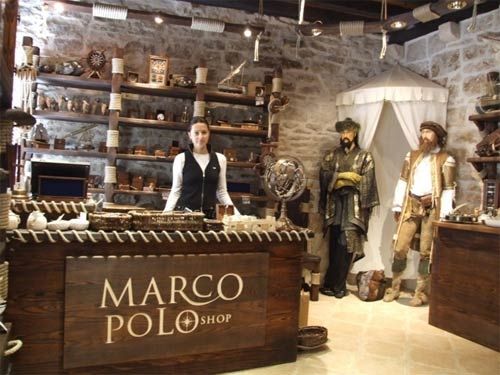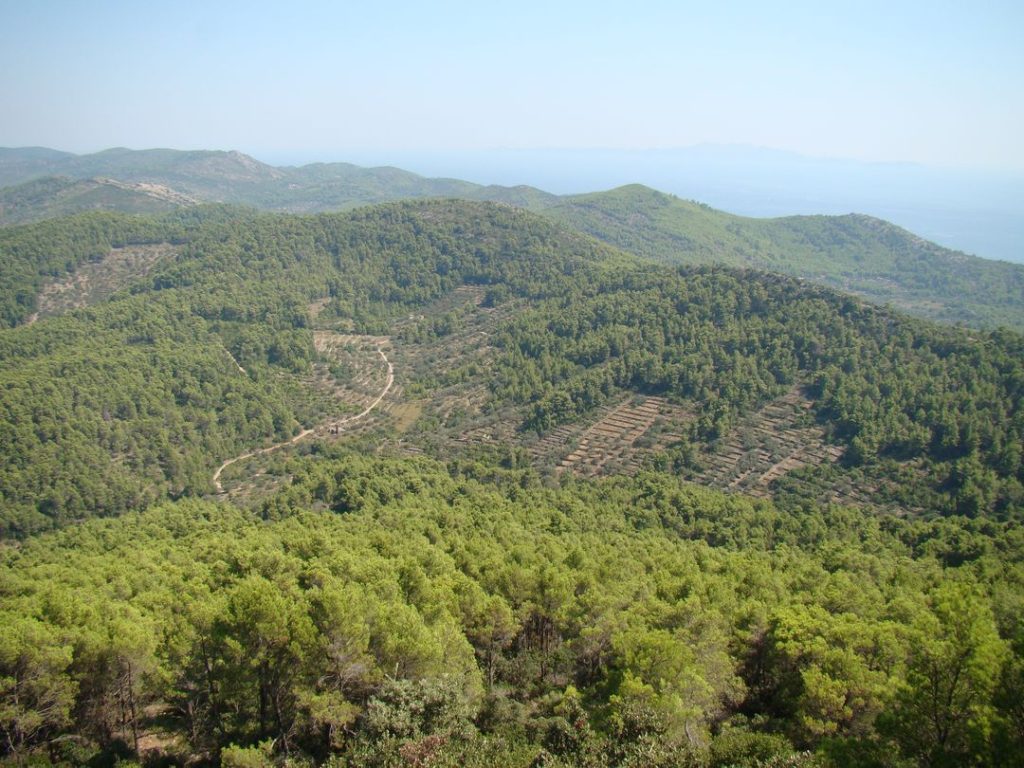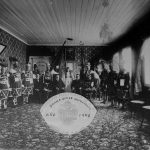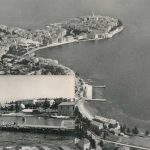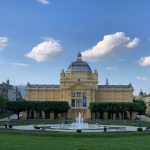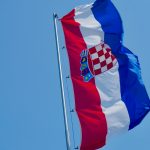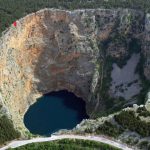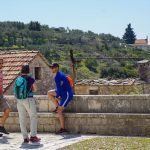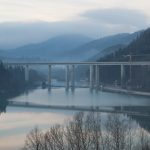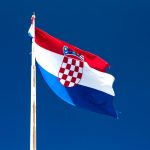Well, the island has been inhabited for at least 20,000 years, and it has changed rulers frequently during that time, so, no, not so brief I’m afraid.
The history of the island of Korčula can be traced back to the Mesolithic and Neolithic times (Stone Age, for those less familiar with historical terminology), which has been determined by numerous archaeological findings all around the island. The most significant such findings are located in Vela Spila, a cave near Vela Luka, where evidence of human dwelling were dated back to almost 20,000 years BC, including pieces of ceramics which link those people to Sicily and Italy where ceramics was made in that period. Another major finding of early dwellers of Korčula is in the Jakas’ Cave, near Žrnovo and Rasohatica beach.
The next step in the inhabitation of the island is said to have happened in the 12th century BC, when the Trojan hero Antenor formed a colony on the island, though not much is known about that colony or its fate. Antenor is remembered as the founder of the Italian city of Padua as well.
Then the island was settled by the Illyrian tribes, around 1000 years BC (that’s when they arrived in the Balkans region and to the islands). They also left lots of evidence of their time on the island, specifically many stone buildings and fortresses (so-called gradine; especially significant are Kopila fortress near Blato, and Mocila location near Pupnat), and recent findings show that those tribes lived alongside the Greeks until the time of Roman conquerors and that they even enjoyed wine!
The current name of the island and the documented history of the island begin in the 6th century BC, when a small Greek colony was founded by Dorian Greeks from the ancient Greek city of Knidos (located in south-western Asia Minor, modern-day Turkey). They called their colony Korkyra, probably after the island of Corfu, also called Korkyra in those times (and currently, in Modern Greek), and later added the descriptor Melaina (black), to distinguish it from the southern island of Korkyra. The reason they called it “black” is something that is still significant for Korčula – it is almost fully covered in forest, making it dark green, almost black!
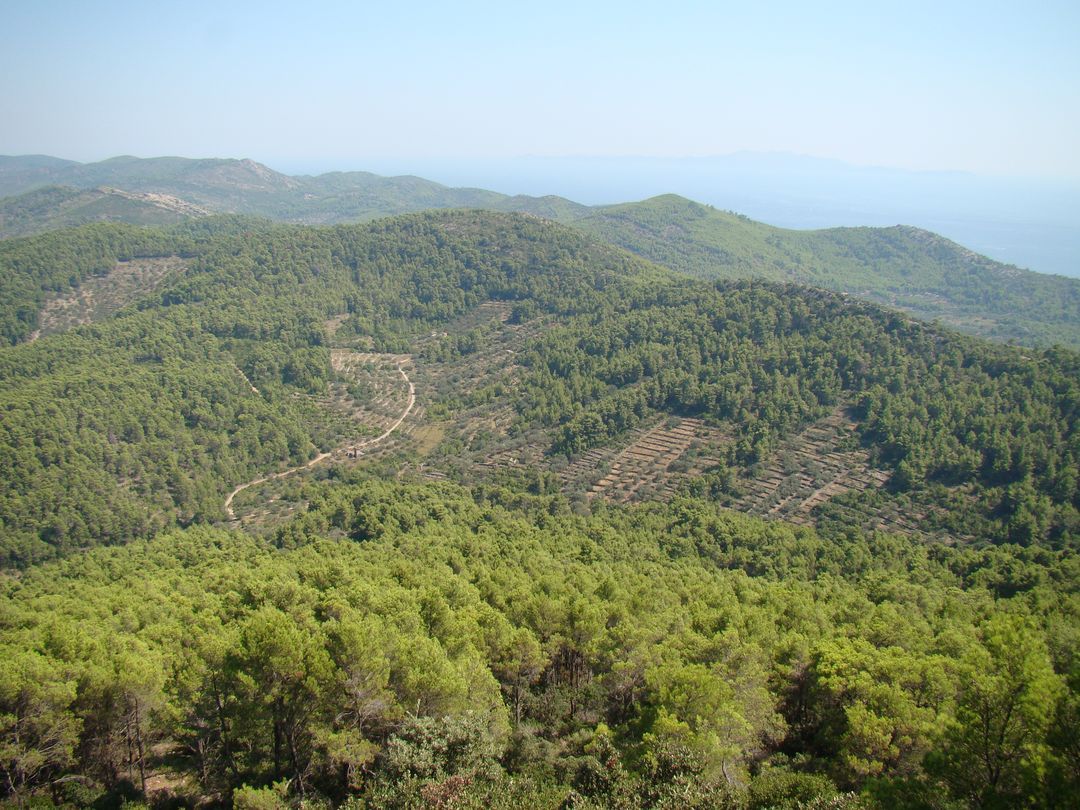
Dark forest and vineyards near Vela Luka, photo by Iva Tatić
An interesting fact about that first Greek colony is that we still don’t really know where it was exactly. Some authors say that it was somewhere between Potirna and Vela Luka to the west, some say it was around today’s Lumbarda, while some maintain that it was where today’s Korčula Town is, based on the similarities of the location of Korčula to the ancient Knidos. Soon after that (just a couple of hundred years!), another Greek colony was founded in Lumbarda by the Greek settlers from the neighbouring Issa colony (we call that island Vis). What they’ve left for the archaeologists to find is a stone inscription called Lumbarda Psephisma found in the late 19th century on a hill near Lumbarda, the oldest written stone monument in Croatia, describing the property rights of the colonists (currently it is located in the Archaeological Museum in Zagreb).
Those two neighbouring communities lived peacefully alongside each other and alongside the Illyric peoples on the island, until the Illyrian Wars (220 BC to 219 BC) with the Romans. That’s when the Roman name, Korkyra Nigra (obviously, translation of the Greek name to Latin) first appears, and sometime in the first century BC the future Roman Emperor Augustus (then still known as Octavian) finally permanently occupied the island Korčula, because of never-ending problems their boats had with Illyrian pirates. During his reign the entire eastern shore of the Adriatic became the Roman province of Illyria.
Not much really changed until the end of the Roman Empire, and in the 6th century AD Korčula fell under Byzantine rule. One other significant finding also dates to that period, and that is the erection of the first Christian church on the small islet of Majsan in the Korčula archipelago – the first evidence of Christianity on Korčula. The Slavic peoples arrived in the Balkans in the 7th century, and the settlers from the Neretva Delta were the first Slavs to arrive on Korčula in the 10th century. They lived along with the Illyric (by then already called “Roman”) people of the island, and the 10th century AD is when the Slavic name of the island is first used: Kurkra or Krkar, depending on who you asked. Byzantine emperor Constantine VII writes about the town Krkar on the island in 935 AD.
Then, in the year 1000, a major change happened, as the Venetian Doge Pietro II Orseolo launched a naval expedition along the Adriatic east coast and assumed the title Duke of Dalmatia (and his lands included the island of Korčula). In the following few hundred years Korčula often changed their rulers, and until 1420 it was ruled by Venetians, Bosnians, Croatians, Croatian-Hungarian rulers and was the part of the Great Principality of Zahumlje. It was during those times that the Statute of Korčula is drafted, in 1214 (although only the later edition from 1265 is documented), the second oldest example of legislation among Slavs, guaranteeing the autonomy of the island and organizing communal relationships in the town.
And it is during those times that the person most often identified with Korčula lived, as the legend says that Marco Polo was born at Korčula in 1254, although there has never been any irrefutable proof of this claim. Part of history that is better documented and that we know for a fact happened is the marine Battle of Korčula, fought in 1298 between the Republic of Genoa and Venetian navy. The Genoese won that battle, and a Venetian galley commander, Marco Polo, was taken prisoner and was supposedly kept briefly in a prison on Korčula, before being shipped to Genoa where he began telling the tales of his previous travels.
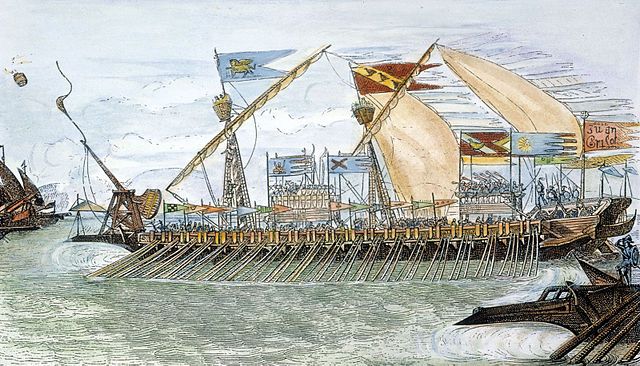
Venetian galley at Curzola – Encyclopedia Britannica, Public Domain, https://commons.wikimedia.org/w/index.php?curid=1165980
In 1420 it finally fell under the strong rule of the Venetians, and was part of the Republic of Venice until it finally fell in 1797. It is during those years that many battles have been fought against the Ottoman armies, as part of the Ottoman-Venetian Wars, which led to the building of the fortification walls and towers around the Korčula Town and in many other places. That was the period of relative stability for the island, as they were firmly under one ruler, had a high level of autonomy and prosperity. After the Venetian Republic was divided, Korčula was given to the Austrian Hapsburgs, and spent the next hundred and fifty years going from one ruler to another, and it was ruled by the Austrians, the French, the Russians, the English and the Italians. In 1921 it finally became part of the Kingdom of Serbs, Croats and Slovenes, when the Treaty of Rapallo was signed. In addition to that country being a massive disappointment to Croatians, that period is also marked with phylloxera destruction of vineyards on Korčula (and elsewhere in Europe), which was a major factor in the huge wave of emigration from the island.
During World War II, the then ruling Ustaše regime supporting the Axis powers forfeited the island, along with most of Dalmatia, to Fascist Italy. After the Armistice between Italy and the Allied powers in 1943, it was briefly held by the Partisans who enjoyed considerable support in the region, before being occupied by the German forces and finally liberated from that occupation in September 1944. As you can imagine for any island being taken from the enemy four times during one war, it was heavily damaged, as it was bombarded mercilessly by the Germans. After the World War II Korčula became a part of the Republic of Croatia, and soon after the war the strong orientation towards tourism started.
